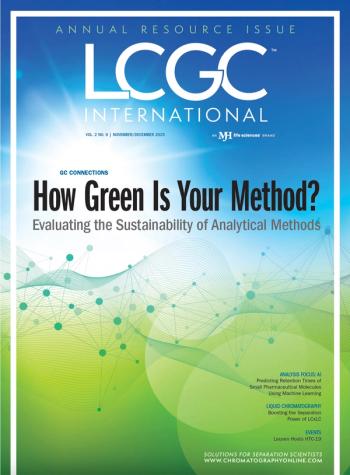
- The Column-05-02-2013
- Volume 9
- Issue 8
Shimadzu Opens "Laboratory World" in Germany
Shimadzu officially opened a new laboratory building called ?Laboratory World? at the company?s headquarters in Duisberg, Germany on the 15th of April,. The building was officially opened in a traditional Japanese ceremony by the President and CEO of Shimadzu, Akira Nakamoto; the Japanese Consul, Kiyoshi Koinuma; and Duisberg?s Lord Mayor, Soren Link.
Shimadzu officially opened a new laboratory building called “Laboratory World” at the company’s headquarters in Duisberg, Germany on the 15th of April. The building was officially opened in a traditional Japanese ceremony by the President and CEO of Shimadzu, Akira Nakamoto; the Japanese Consul, Kiyoshi Koinuma; and Duisberg’s Lord Mayor, Soren Link.
Shimadzu invested €3.2 million into the laboratory that covers over 1,500m 2. The laboratory features training and testing facilities for scientists throughout Europe. The entire product range offered by Shimadzu will be available for demonstration, with an area specially dedicated to mass spectrometry technology and instrumentation.
The laboratory will provide a range of opportunities for Shimadzu and customers, according to Jürgen Kwass, Managing Director of Shimadzu Europa. Kwass added, ”In addition, we offer continuing education and training to customers as well as staff members. Another goal is to create an inspiring atmosphere for our team in which they can develop new methods and technologies for future-oriented products."
For more information please visit:
www.shimadzu.eu
href="http://images2.advanstar.com/PixelMags/lctc/digitaledition/May02-2013.html ">This story originally appeared in
The Column.
Click here to view that issue.
Articles in this issue
over 12 years ago
Detection of Pyrethroids in Surface Water and Sedimentover 12 years ago
Missed My Connectionover 12 years ago
Torun Triumph: ISC 2012 Reviewover 12 years ago
Digging Deep: Ion Chromatography and Climate Changeover 12 years ago
Non-invasive test for the diagnosis of pancreatic cancerover 12 years ago
Thermo buys Life Technologies for $13.6 billionNewsletter
Join the global community of analytical scientists who trust LCGC for insights on the latest techniques, trends, and expert solutions in chromatography.



